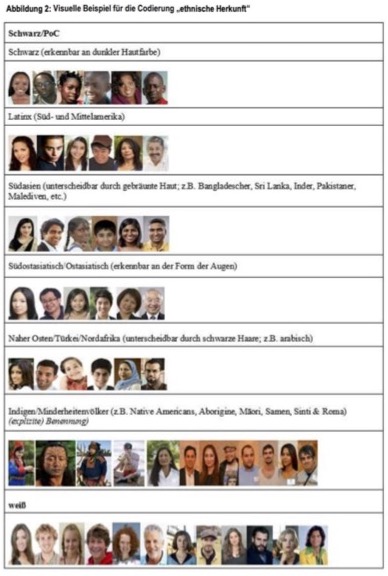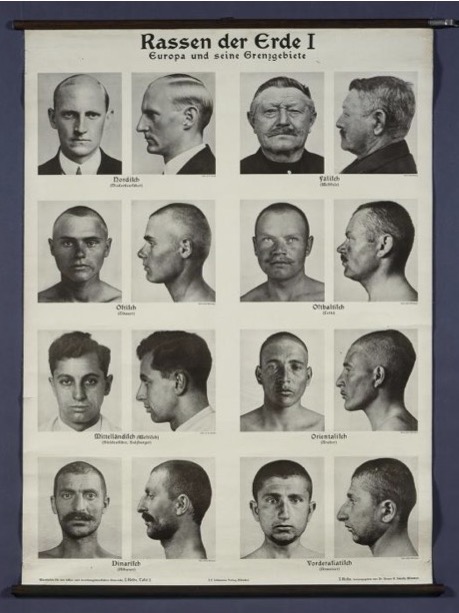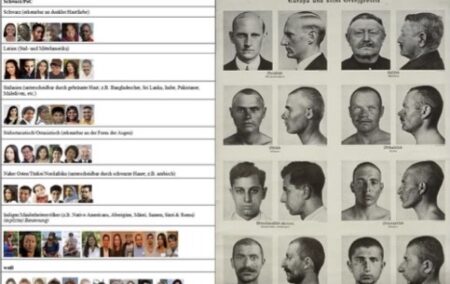A German university’s research project to investigate the under-representation of migrants in TV shows and movies has been criticised for using a system of racial codification reminiscent of the Nazi era.
The Institute for Media Research at the University of Rostock is investigating the lack of ‘diversity’ in German television and cinema.
But, as Bild reports, the problem is that ‘in order to prove that migrants are less represented on TV shows, talk shows and movies, the researchers themselves used racist categories’.
People with different skin colours are divided into categories such as ‘white’, ‘black/PoC’ (People of Color), ‘Latinx’ (Latino), ‘South Asian’ or ‘Indigenous’ in a table. Accompanying these ‘definitions’ are portrait photos of people supposedly representing each group, along with descriptions of their biological characteristics.
Bild says this is intended to help researchers identify ‘the ethnic origin of characters’.
This is the table researchers are reportedly using as a guide to identifying people on television.

The guide provides further hints to aid researchers in identifying people: ‘Black (recognizable by skin color)’; ‘South Asian (distinguishable by tanned skin; e.g. Bangladeshi, Indian, Pakistani)’; ‘Southeast Asian/East Asian (recognizable by the shape of the eyes)’; and ‘Middle East/Turkey/North Africa (distinguishable by black hair; e.g. Arabic)’.
IRR researchers point out that such ethnographic classification was a hallmark of the Nazi era, of which the following chart is an emblem.

However, the University of Rostock has defended the study.
Professor Elizabeth Prommer, director of the university’s Institute for Media Research, said: ‘With our method we have met the demands of anti-discrimination activists to make their marginalisation visible. This is because the discrimination that black & PoC people experience in real life is precisely based on the attribution of externalities.’
The race chart was ‘discussed in detail with activists, discussed and coordinated’, Prommer said.
Researchers also bemoaned the fact that women were ‘underrepresented even as corpses’ (corpses in German television programmes being ‘ony 30% female’).
Supporting the study, the New German Media Makers organisation complained that ‘95 percent of the people’ on television were ‘white’.
But Bild quotes ethnologist Dr Susanne Schröter as saying: ‘From a scientific point of view, categorizing a person based on questionable external characteristics into an equally questionable typology is complete nonsense. You cannot assign someone to a region or an ethnic group based on the colour of their skin, hair or eyes. Neither does something like this happen in external ascription. The whole thing is highly constructed, devoid of any empirically verifiable basis and politically nothing but a paternalistic new racism.’
She added: ‘In the archives of ethnological collections you can still find skin colour tables and devices for measuring the face, which in earlier times were used to classify people into races and ethnic groups. They are artifacts from a past that has fortunately been overcome. I just find it shocking that these methods are celebrating their happy beginnings again in a study by the University of Rostock.’
Professor Jörg Baberowski commented: ‘It is discriminatory and racist to sort people by skin colour. Such categories remind me of the darkest epoch of the 20th century. The Enlightenment, on the other hand, which has a home above all at universities, is colour-blind.’ This approach entailed being ‘guided by argument, not by resentment’, and judging people ‘not by their skin colour, but by what they can, know and do’.


